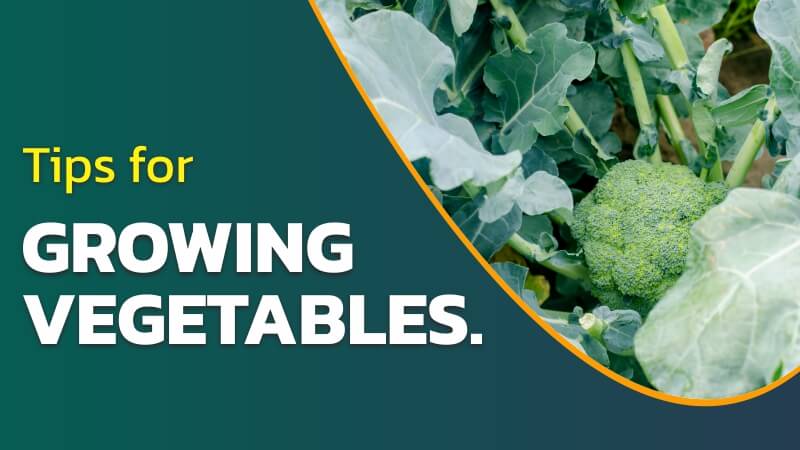Home vegetable planting can help you save money and get closer to the natural world. You can further reduce your costs by growing your favorite veggies and herbs from seeds, such as tomatoes. Additionally, you’ll discover that garden-grown produce has an even greater flavor and texture than what you’re used to buying at the supermarket. Additionally, maintaining a food garden counts as good exercise.
Consider using this advice to start your vegetables garden off right. Our list of vegetables gardening suggestions will be helpful whether you’re a beginner or a seasoned pro:
- Location is crucial:
In full sun, most vegetables grow best. If you can, try to choose a place that receives at least six hours of it daily. Place the tallest plants, like maize, indeterminate tomatoes, or pole beans, on the north or west side of your garden so they don’t shade the smaller ones and provide all of your plants the maximum amount of sun exposure.
- All depends on the soil
The finest soil for growing veggies contains a lot of compost and organic materials, including composted leaves and old, ground-up bark. Include enough organic material to amend the soil such that it is neither sandy nor compacted, regardless of where you started.
When the ingredients are combined properly, it will bond together when squeezed yet separate readily when disturbed. The live microorganisms in this soil help feed your plants. The soil won’t become overly saturated with water while still being adequately retained.
- Use Water Wisely
One inch of water per week, including any natural rainfall, is sufficient for the majority of vegetables plants. Using soaker hoses and drip lines to irrigate is the most effective and productive method. These carefully release water where it is needed, giving roots time to take the liquid and the soil enough time to hydrate, and assisting in keeping leaves dry. Long-term wet foliage might encourage the spread of illnesses.
- Apply Mulch
If feasible, add a three-inch layer of any organic mulch over the irrigation lines and around your plants. Mulch will insulate the soil, assisting in regulating its temperature throughout the year. Additionally, it aids with moisture retention, controls weeds, and serves as a barrier against illnesses that can splash up onto the plants from the soil. Mulch also enhances the appearance of the landscape.
Both knowing where your mulch comes from and using it are crucial. in a food garden, especially. Some mulches may contain excessive levels of dangerous chemicals. The non-profit organisation The Mulch and Soil Council certifies bagged mulches and soils to be free of any toxic substances, despite the fact that there is not yet a similar certification for bulk mulch. Check for their seal on the bag, or inquire about the origin of the mulch from your bulk mulch supplier.
- Be patient when tackling pest control
Even though pests are a given in every vegetables garden at some point, if you have patience, nature will typically take care of the issue. After all, only approximately 3% of the insects in your garden are genuine pests. You’ve already done enough precautions to encourage the growth of healthy plants that are better able to resist any pest incursions if you follow the up-to-date instructions.
If you must use insecticides, use them carefully! Consequently, only in the late afternoon or evening, and then only when necessary. Never use insecticides in the morning when beneficial insects and pollinators are most active. If not, you’ll probably end up killing them too. Of all areas, I think it is preferable to avoid using chemicals in a food garden! Instead, concentrate on cultivating healthy plants in excellent soil with plenty of sunshine, and let nature take its course. Because they are non-selective, synthetic and even many organic/natural pesticides can harm beneficial insects.
- Avoid Over Fertilizing:
Nitrogen is the first number on the fertiliser package, and too much of it can encourage plenty of lush green growth at the expense of fewer fruits and a lesser yield. Additionally, too much fertiliser can be bad for the soil and your plants. Instead, increase the amount of organic compost you use by as much as 20% of the overall soil composition. You may give your plants the nutrients they require to thrive naturally if you mix it in with the rest of the soil. In other words, nourish the soil so that it can nourish the plants.
- Feed, Water, and Weed:
Water, weed, and feed your crops is one of the most fundamental bits of gardening advice. But inexperienced gardeners might not be aware of when or how much water to use. Most mature crops may thrive on one to two inches of water per week, however newly sown regions would need frequent watering. In order to conserve water and reduce the need for irrigation, cover your soil with several inches of straw or finely chopped leaves. Mulch also aids in preventing the development of weeds. Fast-growing plants, like radishes, won’t need additional fertiliser if they are put in healthy soil.
- Pick Your Plant:
Choose your plants carefully because it can be very tempting to grow everything in your first veggie garden. But I’d advise you to choose 4–5 different vegetable varieties and grow them effectively for your own benefit. If you try to fit too much into a small space, your crop will be lower rather than larger. However, succession planting can increase yield. Sow a second crop as soon as your first one is finished being harvested.
Get detailed information on growing vegetables from khetiguru mobile application.
Visit khetigaadi.com to know about tractors, tractor price, tractor games, tractor videos and so on.




